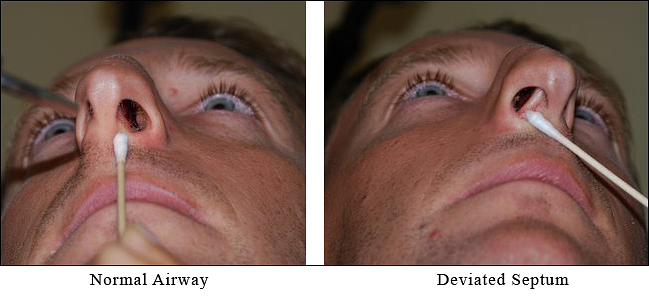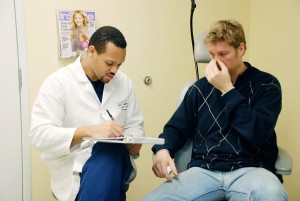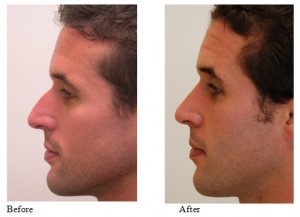- Hereditary Hemorrhagic Telangiectasia - May 25, 2016
- Hereditary Hemorrhagic Telangiectasia: Septal Perforation and Nose Bleeds - May 23, 2016
- Hereditary Hemorrhagic Telangiectasia: Epistaxis and Septal Perforation - May 18, 2016
- Wegener’s Granulomatosis: Autoimmune Disease and Multi-Focal Septal Perforation - May 9, 2016
- Kyle Korver: Facial Injury and Nasal Fracture - March 24, 2015
- Russell Westbrook: Facial Injury and Surgery - March 5, 2015
- Mega-perforation: Pushing the Limits of Septal Perforation Repair - November 26, 2014
- Septoplasty Complication and Septal Perforation - November 24, 2014
- Nose Picking (Rhinotillexis) and Septal Perforations: Why I should stop picking my nose…? - November 24, 2014
- Nasal Fractures, Septal Hematoma, and Septal Perforation: Simultaneous Rhinoplasty and Septal Perforation Repair - October 1, 2014
Millions of Americans suffer form from chronic nasal stuffiness or congestion. This may be indicative of chronic breathing problems that don’t respond well to ordinary treatment. The blockage may be related to structural abnormalities inside the nose (i.e. septum, turbinates) or to swelling caused by allergies or viruses.

Causes of Nasal Obstruction:
Deviated Septum
There are numerous causes of nasal obstruction. A deviated septum (the partition between the nostrils) can be crooked or bent as the result of abnormal growth or injury. This can partially or completely close one or both nasal passages. The deviated septum can be corrected with a surgical procedure called a septoplasty. Cosmetic changes to the nose are often performed at the same time, in a combination procedure called septorhinoplasty to improve both form and function to the nose.
Turbinate Hypertrophy
Overgrowth of the turbinates is yet another cause of stuffiness. (The turbinates are the tissues that line the inside of the nasal passages.) Sometimes the turbinates need treatment to make them smaller and expand the nasal passages. Treatments include radiofrequency and laser coblation, injection, freezing, and partial removal.
Allergies
Seasonal Allergies can also cause internal nasal swelling and cause congestion, and allergy evaluation and therapy may be necessary.
What treatment is needed for a deviated septum and broken nose?
Bruises around the eyes and/or a slightly crooked nose following injury usually indicate a fractured nose. If the nasal bones are pushed over or out to one side, immediate medical attention is ideal. But once soft tissue swelling distorts the nose, waiting 48-72 hours for a doctor’s appointment may actually help the doctor in evaluating your injury as the swelling recedes. (Apply ice while waiting to see the doctor.) What’s most important is whether the nasal bones have been displaced, rather than just fractured or broken.
For markedly displaced bones, we repair the fractured nasal bones to a straighter position under local or general anesthesia. This is usually done within seven to ten days after injury, so that the bones don’t heal in a displaced position. In the case of severe fractures that are irregular and won’t “pop” back into place, the procedure is successful only half the time. Severe displacement due to injury often results in compromised breathing so corrective nasal surgery, typically septorhinoplasty, may then be elected. This procedure is typically done on an outpatient basis, and patients usually plan to avoid appearing in public for about a week due to swelling and bruising.
Will insurance cover nasal surgery?
Insurance usually does not cover cosmetic surgery. However, surgery to correct or improve breathing function, major deformity, or injury is frequently covered in whole or in part. Patients should obtain cost information from their surgeons and discuss with their insurance carrier prior to surgery.
To learn more about Dr. Jason Hamilton or deviated septums, visit: http://www.ohninewnose.com/



